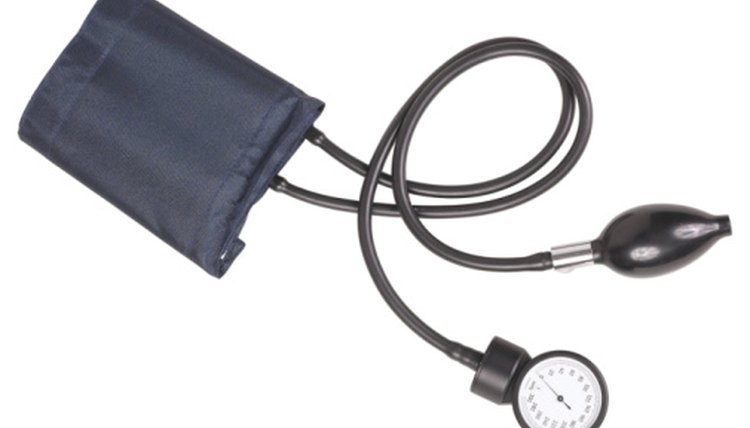How to Count the Numbers on a Sphygmomanometer

A sphygmomanometer is a tool that measures blood pressure. It is composed of an inflatable cuff with an attached pressure gauge and a tube with a bulb at the end to inflate the cuff. It is used with a stethoscope to determine blood pressure. Two measurements are taken: systolic pressure--blood pressure while the heart is contracting, and diastolic pressure--blood pressure while the heart is relaxed, or filling. Normal blood pressure range is anything less than 120 mm Hg for systolic and 80 mm Hg for diastolic.
Wrap the blood pressure cuff snugly around the upper arm of the patient. Place the pads of your index and middle fingers on the front of the elbow until you feel a pulse. Position the arrow labeled 'artery' above the area where the pulse was felt.
Place the end of the stethoscope over the area where you felt the pulse. With your other hand, hold the bulb attached to the sphygmomanometer. Turn the release valve clockwise until it is closed. Pump up the cuff until the gauge hits 180 mm Hg.
Slowly turn the release valve counter-clockwise until the cuff begins to deflate.
Listen for the patient's heartbeat. When you hear it, look at the gauge and note the number that the needle is pointing to. Each dash represents one mm Hg and numbers typically appear at 10 mm Hg intervals. This number is the patient's systolic blood pressure.
Watch the gauge as you continue to listen to the heartbeat. At some point you will no longer hear the beating. Record the number that this occurs at. This number is the patient's diastolic blood pressure. Release the rest of the air out of the cuff and remove it from the patient.
References
Writer Bio
Aubrey Bailey has been writing health-related articles since 2009. Her articles have appeared in ADVANCE for Physical Therapy & Rehab Medicine. She holds a Bachelor of Science in physical therapy and Bachelor of Arts in psychology from the University at Buffalo, as well as a post-professional Doctor of Physical Therapy from Utica College. Dr. Bailey is also a certified hand therapist.
